Part of the mission of any good post frame (pole) building kit package supplier or contractor should be to save the client from making crucial design errors which they will later regret.
Among the most often questions I answer in my “Ask the Pole Barn Guru” weekly column is in regards to the ability of an existing building’s roof trusses to carry a ceiling load. I’ve expounded in this area in the past:
https://www.hansenpolebuildings.com/2013/03/ceiling-loads/
With a client who possibly did not communicate their needs well: https://www.hansenpolebuildings.com/2015/04/ceiling-load-2/
Existing buildings: https://www.hansenpolebuildings.com/2013/10/ceiling-load/
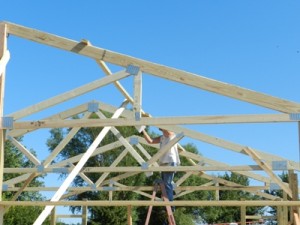 This morning Hansen Pole Buildings’ Designer Dennis asked a question of me which I had failed to address in the past 1000 plus blog posts, “I was looking on blogs couldn’t find difference between roof trusses designed for ceiling load and not designed”.
This morning Hansen Pole Buildings’ Designer Dennis asked a question of me which I had failed to address in the past 1000 plus blog posts, “I was looking on blogs couldn’t find difference between roof trusses designed for ceiling load and not designed”.
Like most anything here at Hansen Pole Buildings, ask the question and ye shall receive an answer.
Increasing the ceiling load carrying capacity of a roof truss can result in one or more of many changes. Generally there will be more changes to the physical nature of the trusses as the span of the truss, or roof snow loads increase.
Here are some of the things which might change:
Grade of lumber. The #2 grade lumber which one might acquire at the local big box store or lumberyard is rarely strong enough to be used in most truss chord applications. Most generally one finds the use of #1 or Select Structural visually graded material, or what is known as machine graded lumber (https://www.hansenpolebuildings.com/2012/12/machine-graded-lumber/). Often the need for increased load carrying capacity can be accommodated by a step or two up the ladder in the strength of the lumber.
Sometimes, stronger lumber alone, will not be the cure and larger dimensions of lumber may need to be utilized. 2×8 instead of 2×6 as an example.
Truss webs – those internal pieces of the truss, the ones running at angles between the top and bottom chords are known as “webs”. Sometimes the extra load capacity can be gained by adding more webs to the truss.
And let us not forget the lowly steel connector plates, which hold prefabricated metal connector plated trusses together. All of those joint connections now have to take an increased load, so there is going to be more square inches of steel utilized to do the trick.
The important part is less about HOW the load is going to be carried, and all about the ABILITY to carry it. Considering a new post frame building? If you think either you or the next owner or owners of the building might ever consider adding a flat level ceiling in the building, then it would be prudent to (at the least) order trusses designed to support the load now.
This is not the place to scrimp out trying to pinch a few pennies!
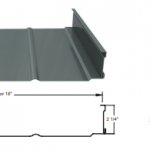 DEAR JAVO: Clip lock standing seam panels have no ability to transfer wind shear loads and should only be installed over 5/8″ CDX plywood sheathing. If not, your building is likely to rack (or even fail) due to wind loads. There are other reasons to use sheathing:
DEAR JAVO: Clip lock standing seam panels have no ability to transfer wind shear loads and should only be installed over 5/8″ CDX plywood sheathing. If not, your building is likely to rack (or even fail) due to wind loads. There are other reasons to use sheathing: 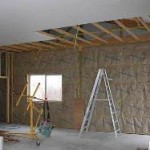 DEAR CHAD: Unlike all Hansen Pole Buildings with spans of 40 foot or less (where we have our interior double trusses always designed to be able to support at least a minimal ceiling load of five pounds per square foot), most pole barn trusses are not ordered or designed to support any sort of a ceiling. Many times trusses will have a stamp on them stating truss spacing and loads, if so, you want a Bottom Chord Dead Load of 5 psf or greater. If nothing else, truss manufacturer’s stamp will tell you who fabricated those trusses and you can reach out to them to verify adequacy. If they do not have records available, or are no longer in business, you should engage a Registered Professional Engineer to perform a field inspection to verify adequacy, or to provide an engineered repair.
DEAR CHAD: Unlike all Hansen Pole Buildings with spans of 40 foot or less (where we have our interior double trusses always designed to be able to support at least a minimal ceiling load of five pounds per square foot), most pole barn trusses are not ordered or designed to support any sort of a ceiling. Many times trusses will have a stamp on them stating truss spacing and loads, if so, you want a Bottom Chord Dead Load of 5 psf or greater. If nothing else, truss manufacturer’s stamp will tell you who fabricated those trusses and you can reach out to them to verify adequacy. If they do not have records available, or are no longer in business, you should engage a Registered Professional Engineer to perform a field inspection to verify adequacy, or to provide an engineered repair.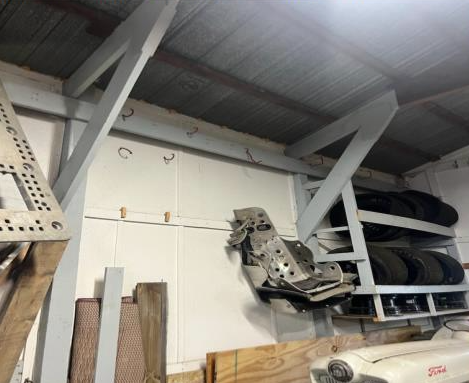
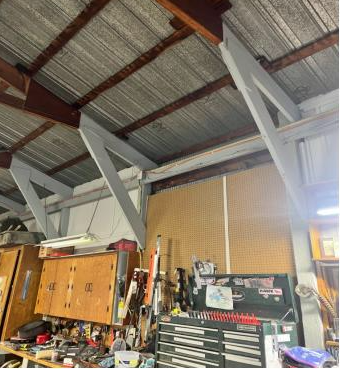

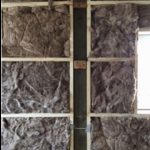 For your walls, I would recommend unfaced Rockwool either R-30 with a well-sealed interior vapor barrier or R-20 with R-5 well sealed continuous insulation boards on the interior (Comfortboard® 80 or EPS).
For your walls, I would recommend unfaced Rockwool either R-30 with a well-sealed interior vapor barrier or R-20 with R-5 well sealed continuous insulation boards on the interior (Comfortboard® 80 or EPS).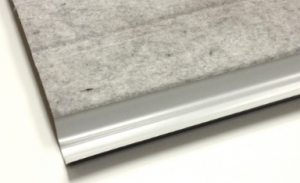 DEAR POLE BARN GURU: Hello, I am building a 36x50x12 shop with 5:12 roof pitch, that will be conditioned space. The plan is to build out the interior with 2 small bedrooms and a bath then the rest open floor. I am putting in a ceiling at 12′ and will insulate the walls and ceiling leaving the roof uninsulated. Building is located in South Central Texas near La Grange. Does the roof need sheathing and felt or can I just lay the metal roof directly on the purlins? What about adding house wrap to entire building, walls and roof? Being in Texas, heat is biggest factor and with the a/c pumping inside I want to keep attic space vented correctly to keep moisture from building up. I plan to have large soffits to allow for soffit venting then ridge vent on roof. One of my biggest concerns is keeping out all the elements, including creep crawly bugs and concerned the garage doors will be source intrusions. It is my understanding that a sectional garage door is best for keeping out the elements vs roll up type. Can a garage door be truly sealed from all elements including bugs from crawling in? STEVEN in SUGAR LAND
DEAR POLE BARN GURU: Hello, I am building a 36x50x12 shop with 5:12 roof pitch, that will be conditioned space. The plan is to build out the interior with 2 small bedrooms and a bath then the rest open floor. I am putting in a ceiling at 12′ and will insulate the walls and ceiling leaving the roof uninsulated. Building is located in South Central Texas near La Grange. Does the roof need sheathing and felt or can I just lay the metal roof directly on the purlins? What about adding house wrap to entire building, walls and roof? Being in Texas, heat is biggest factor and with the a/c pumping inside I want to keep attic space vented correctly to keep moisture from building up. I plan to have large soffits to allow for soffit venting then ridge vent on roof. One of my biggest concerns is keeping out all the elements, including creep crawly bugs and concerned the garage doors will be source intrusions. It is my understanding that a sectional garage door is best for keeping out the elements vs roll up type. Can a garage door be truly sealed from all elements including bugs from crawling in? STEVEN in SUGAR LAND





